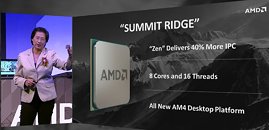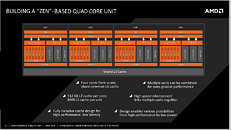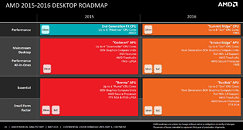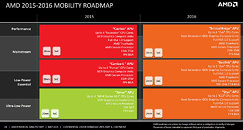
AMD Socket AM4 Platform Demo Motherboard Pictured
AMD at its pre-Computex media event, showed off the first next-generation socket AM4 processor based on the 14 nm "Summit Ridge" silicon. That processor wasn't alone, it also came with a platform demonstrator for the company's industry partners, behind closed doors. This includes a platform demonstrator motherboard by AMD. Earlier this year, a Chinese tech-site caught a glimpse of this board. There's never anything glamorous about platform demo boards (from either AMD or Intel), they tend to be a haphazard bunch of slots and ports that max out the platform's feature-set. The same applies to this AM4 board.
The picture reveals a few big things about the AM4 socket, and the platform in general. To begin with, the 1331-pin PGA socket is somewhat the same size as AM3+, but likely features finer pins. It features CPU cooler retention holes in a "square" layout, rather than the rectangular layout that AMD has been using way back since socket 754. It will be interesting to see if these mount holes are compatible with any of Intel's sockets. The second and perhaps the biggest change of this platform, of course, is that the chipset is completely integrated with the processor, and so there's no chipset on the board. The processor socket wires out all the connections a southbridge, FCH, or PCH normally would, plus all the I/O of a northbridge (PCIe, memory, etc). The platform supports dual-channel DDR4 memory, and PCI-Express gen 3.0 across its PCIe budget.
The picture reveals a few big things about the AM4 socket, and the platform in general. To begin with, the 1331-pin PGA socket is somewhat the same size as AM3+, but likely features finer pins. It features CPU cooler retention holes in a "square" layout, rather than the rectangular layout that AMD has been using way back since socket 754. It will be interesting to see if these mount holes are compatible with any of Intel's sockets. The second and perhaps the biggest change of this platform, of course, is that the chipset is completely integrated with the processor, and so there's no chipset on the board. The processor socket wires out all the connections a southbridge, FCH, or PCH normally would, plus all the I/O of a northbridge (PCIe, memory, etc). The platform supports dual-channel DDR4 memory, and PCI-Express gen 3.0 across its PCIe budget.






